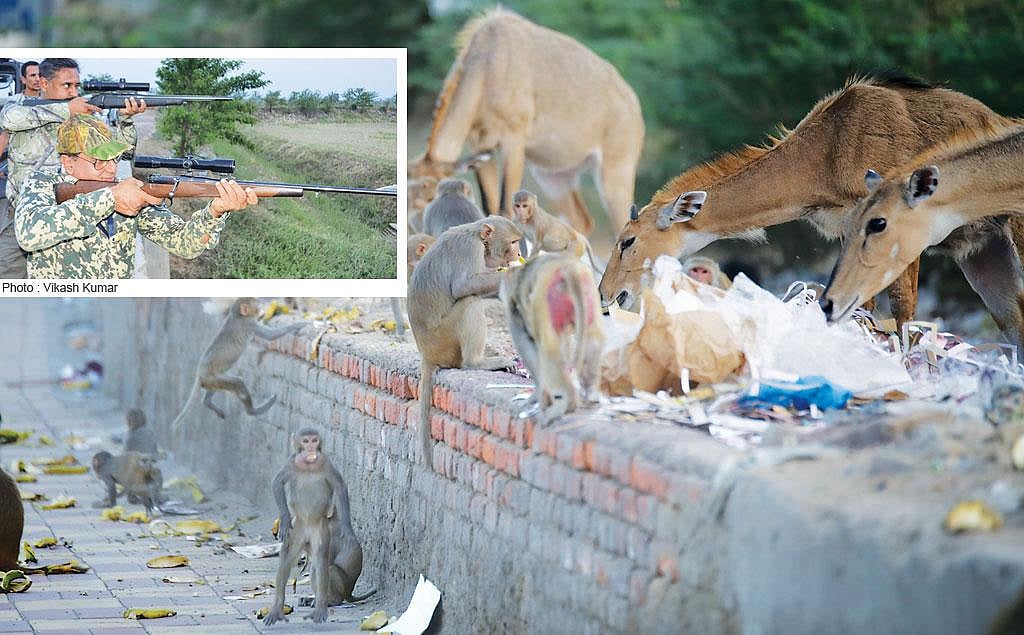Haryana Government Permits Nilgai Shooting
The Haryana government has recently approved new Wildlife (Protection) Rules permitting the shooting of male Nilgais, also known as blue bulls. This decision has ignited protests from environmentalists and local communities, particularly the Bishnoi community. Critics argue that this approach is neither ethical nor sustainable for addressing human-wildlife conflicts.
Background of the Nilgai Controversy
- Nilgais are an integral part of Haryana’s wildlife and contribute to the region’s biodiversity.
- Their population has been perceived as a threat to agriculture, leading to calls for management solutions.
- The government’s decision has raised concerns about the ecological balance and the implications of legally permitting the killing of these animals.
Key Facts About Nilgai
- Nilgai or Blue Cow (Boselaphus tragocamelus) is native to Indian subcontinent (India, Nepal, Pakistan)
- It is the biggest among antelopes in Asia.
- Nilgai has been considered sacred in Hinduism since the Vedic period (1500–500 BC).
- Since “Nilgai” has religious importance, some states proposed renaming it as ‘Rojad’ (forest antelope) to allow culling.
Physical Features
- Size: 1.7–2.1 meters in length
- Weight:
- Males: 109–288 kg
- Females: 100–213 kg
- Tail Length: 54 cm
- Horns (Only in Males): 15–24 cm long
- Appearance:
- Males: Bluish-grey color
- Females: Orange/tawny color
- Both have a sloping back, thin sturdy legs, and a white throat patch.
- Males have a “pendant” (13 cm long coarse hair below the throat).
Behavior
- Active During the Day: Diurnal species.
- Group Behavior: Found in small groups of 3–6.
- Cautious Nature: Tame but timid when threatened.
Human-Wildlife Conflict
- Crop Damage: Considered a pest in some states due to destruction of crops.
- Vermin Status: Bihar has classified Nilgai as vermin, allowing legal hunting.
Conservation Status
- IUCN Status: Least Concern
- Indian Wildlife Protection Act (1972): Listed under Schedule III.
Protests and Opposition
Environmental groups have strongly opposed the shooting rule. They argue that it fails to address the root causes of human-wildlife conflict. Many activists believe that there are more effective and humane alternatives to manage Nilgai populations without resorting to lethal measures.
Proposed Alternatives to Shooting
Activists have suggested various non-lethal methods to manage Nilgai populations. These include translocating overpopulated Nilgais to other suitable habitats where they can thrive without threatening crops. Additionally, conservation efforts focusing on habitat restoration and the removal of invasive species have been recommended.
Community Involvement in Wildlife Management
Local communities have been encouraged to participate in wildlife management. Initiatives such as establishing community reserves and using traditional farming practices can help create safe havens for Nilgais. Fencing techniques and community-led crop protection strategies have also been proposed to mitigate crop damage without harming wildlife.
Role of the Bishnoi Community
- Religious Sect & Origin: The Bishnoi community is a Hindu sect mainly found in the Western Thar Desert and some northern states of India.
- Founder: Guru Jambhesvara, born in 1451 AD in Peepasar village (Nagore district, Rajasthan), established their teachings.
- Strict Environmental Protection: Bishnois strictly forbid harming trees and animals, making them one of the earliest conservationists.
- Willing to Sacrifice for Nature: They believe in protecting the environment and are even willing to die for it.
Month: Current Affairs - February, 2025
Category: Environment Current Affairs





